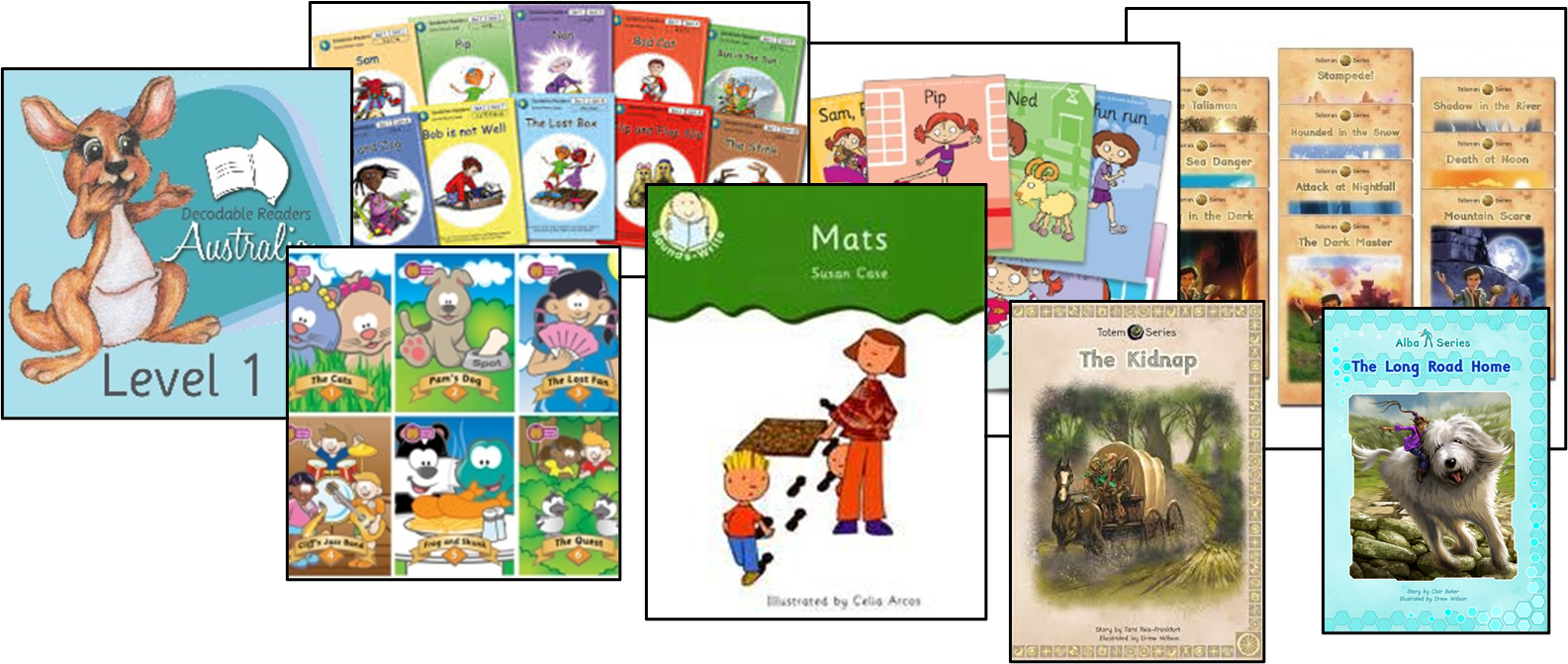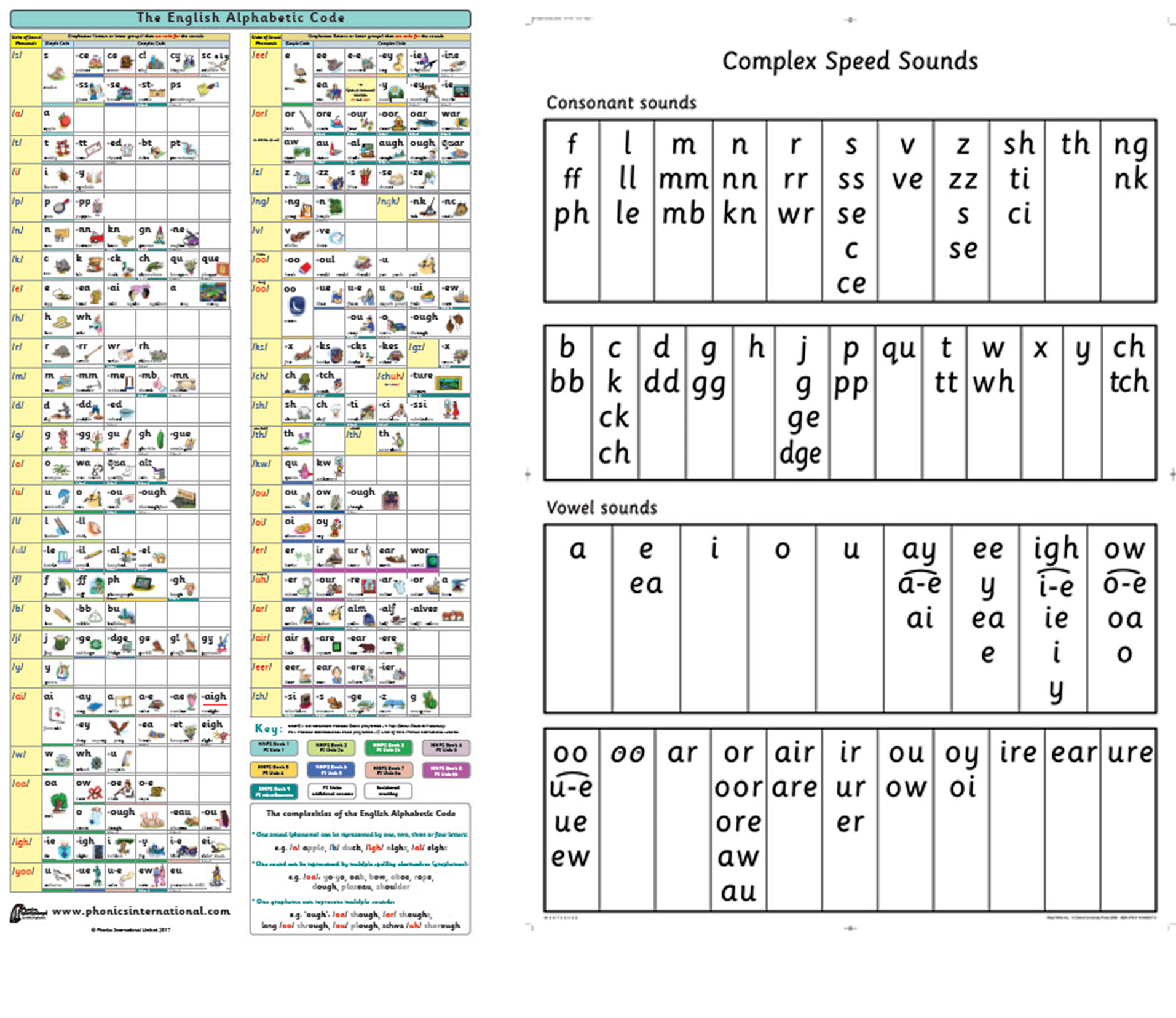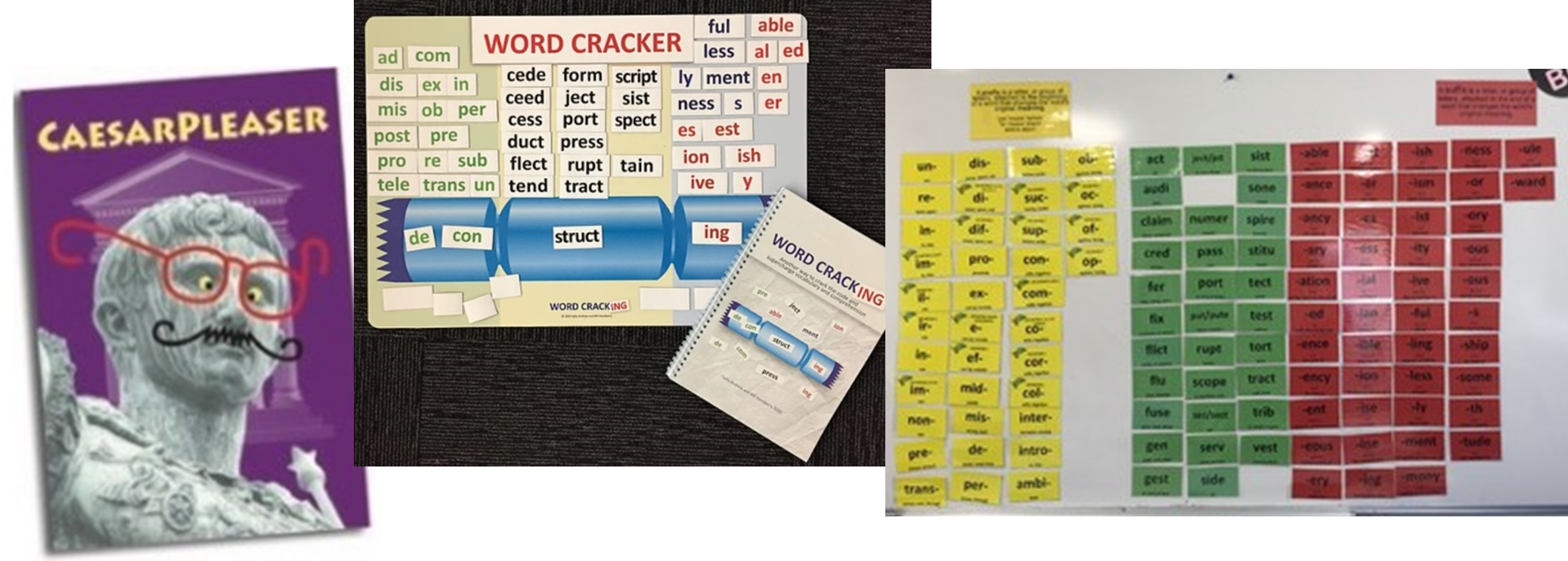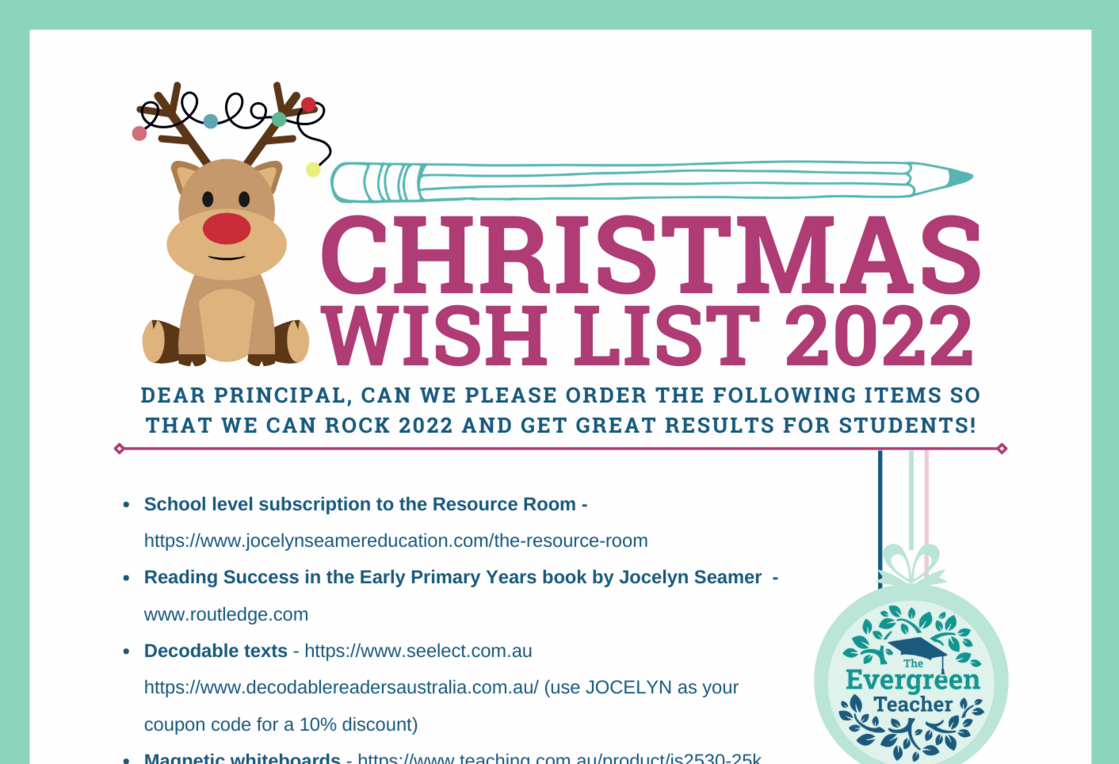All I want for Christmas in an Evidence Based Classroom...

As we approach the end of the 2020 school year here in Australia you may have the good fortune to be asked what resources you would like to order for 2021. If that’s the case, here are my top suggestions for items that can pack a big punch in your class next year (not in any particular order...)
1) Decodable texts. You can never get enough decodable texts. You need enough so that every child can have a ‘perfect fit’ decodable to use in reading instruction, access to them in quiet reading time AND be able to take them home for home reading. Remember, decodables aren’t just for the first year of school. They support student of ALL ages who are working towards reading proficiency.

- Magnetic white boards. There is nothing quite as satisfying as writing on a nice whiteboard. While we do want children writing in books from their first days in school, whiteboards have a definite place in the explicit teaching classroom. Making sure that you get magnetic whiteboards means that you can use them for your younger students in blending and segmenting while they are learning to correctly form letters. As with all things, you get what you pay for so don’t scrimp here. Buying cheaper whiteboard will see you replacing them in a few months when they no longer rub off properly!

- Magnetic Letters – All magnetic letters are not created equal. My absolute favourite ones are foam and come from Get Reading Right. They come in different fonts and have a large teacher version for modelling to a large group. Magnetic letters are more than a fun thing to have in your rotations. They are an important teaching tool, particularly when teaching early blending and segmenting before children have automatic and accurate handwriting. When children are learning these key skills asking them the segment AND write the graphemes can place an enormous cognitive load on the child. Using magnetic letters means that you are reducing the intrinsic load of the task and making success possible.

- Sound phones – these odd little gadgets help children really hear the phonemes they are saying. For many students, they may think that they are saying a phoneme correctly, but are actually saying something else. These are also called whisper phones and can be used in reading lessons where children read to themselves. You can make these ‘phones’ relatively easily using PVC pipe from your local hardware store.

- Pocket dice – these super versatile dice can be used for a variety of purposes across the curriculum, but in literacy you can use them to:
- Place rhyming and non-rhyming pictures in the dice. Roll the dice and play ‘thumbs up, thumbs’ down as a phonological awareness game.
- Place pictures in one dice and words in the other. Roll the dice and ask children to read the word to themselves, hiding their hands. When you say “go!” the children reveal their hands to say whether the picture and the word match.
- Place pictures in one of the die. Roll the die and ask children to segment the word, writing it on their mini-whiteboards.
There are so many options for this resource, I couldn’t possibly share them all! As with all resources, pocket dice can be used for all ages. If you teach older students you can place morphemes in the pockets and have children build words or do sentence work with picture as a stimulus.

- A document camera – a document camera is a super cool tool that enables every child in your class to see what it happening up close. You can use it display a decodable text, model writing and spelling, share a students’ work while you give feedback to reinforce what has worked well or model correct letter formation. There is no age limit when considering this tool!

7. Durable alphabetic code charts – having the English alphabetic code visible in classrooms is really useful. They enable you to point out phoneme/grapheme correspondences as you encounter them in lessons across the day and engage children in thinking about how words work. The chart on the left can be found at https://alphabeticcodecharts.com/

8. Morphology Resources – As well as teaching children how the alphabetic code works, we need to teach morphology. Morphemes are the smallest units of meaning in a word.
The Caesar pleaser card game is great fun for working with Latin morphemes.
Word Cracking Board, magnets and guide will help you effectively unpack morphology for your students
The Greek and Latin Morphology cards would complement your alphabetic code charts and provide a ready reference for your classroom work.

9. Reading Pathways Fluency Practice Book – For children who have learned their initial code and are struggling to develop fluent and accurate word level reading, the Reading Pathways Book is a really handy resource. With practice pages that increase in complexity as children develop, this book is a must to provide simple support for children.

10 – A sound field system – now this one is a biggie, but if you are asking for things you may as well go for gold. A sound field system puts your voice in stereo in the classroom so that everyone can hear you. This is particularly important for students with hearing impairment, developmental language delay, ADD, autism or are simply a little bit tired. In my opinion, a sound field system is a must for every classroom. You might need to offer to support some fundraising support for this one. At about $3000 each they aren’t a cheap item, but will make a huge difference to your students and your voice.

Finally, put your order in for quality professional learning. My online Teach Along courses offer you the chance to experience your professional learning in a flexible way that supports your time constraints and cognitive load. You can learn more about my 2021 Professional Learning opportunities here.
To help you state your case to your Principal, I have put together a downloadable Christmas Wish list complete with web addresses to find the items listed in this blog post. Remember, when you are asking your Principal to spend money, state your case in terms of the following:
- What the impact on student learning will be
- Why you can't achieve the same result with the resources you already have
Good luck!


 Jocelyn Seamer Education
Jocelyn Seamer Education
2 comments
Just ordered a class set of GRR letters for my K's and have most of the others. Off to check out document cameras and order that book :)
Do you have any more info re: organisation, management of magnetic letters. Eg does each child need their own set?
Leave a comment